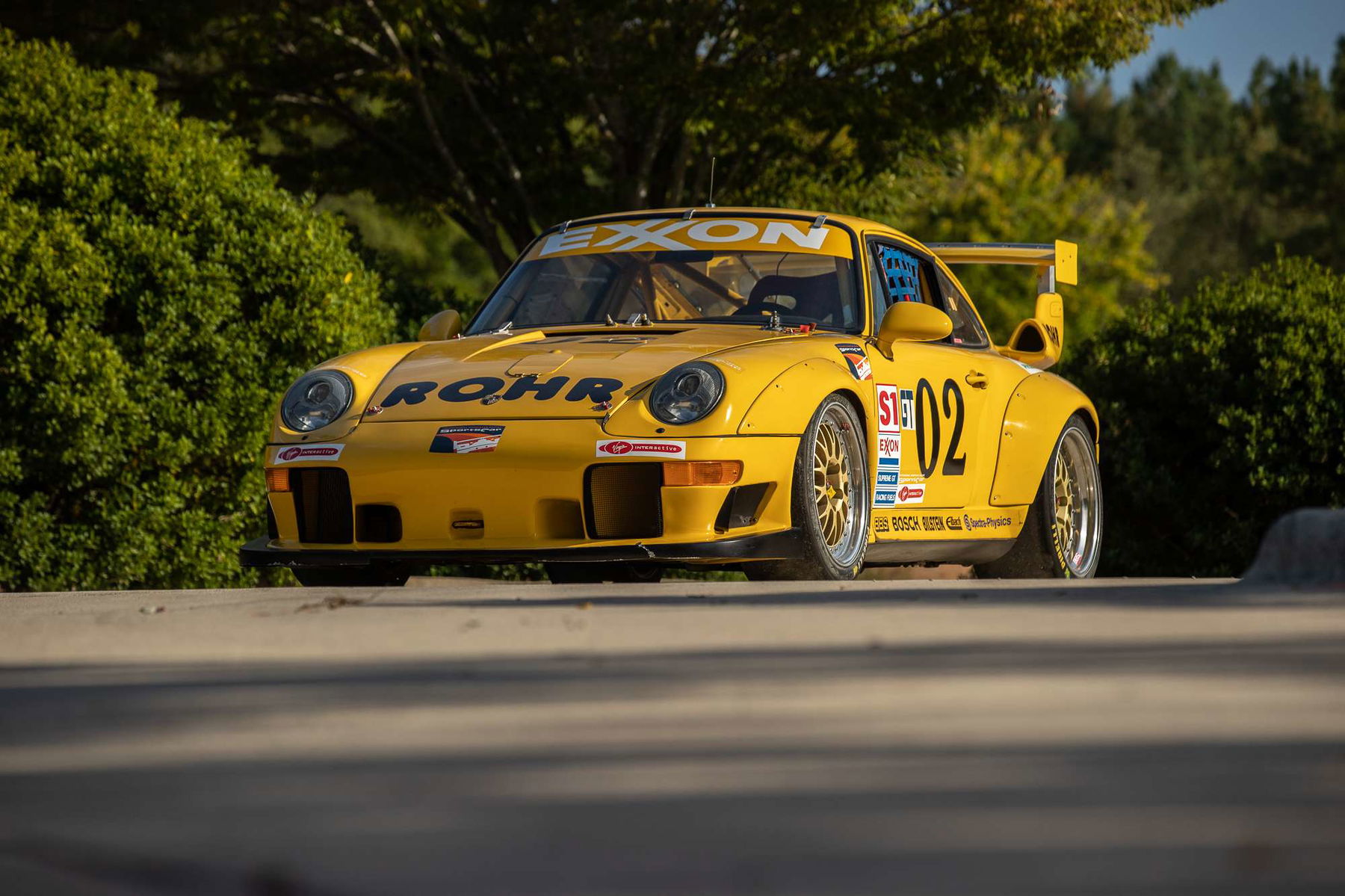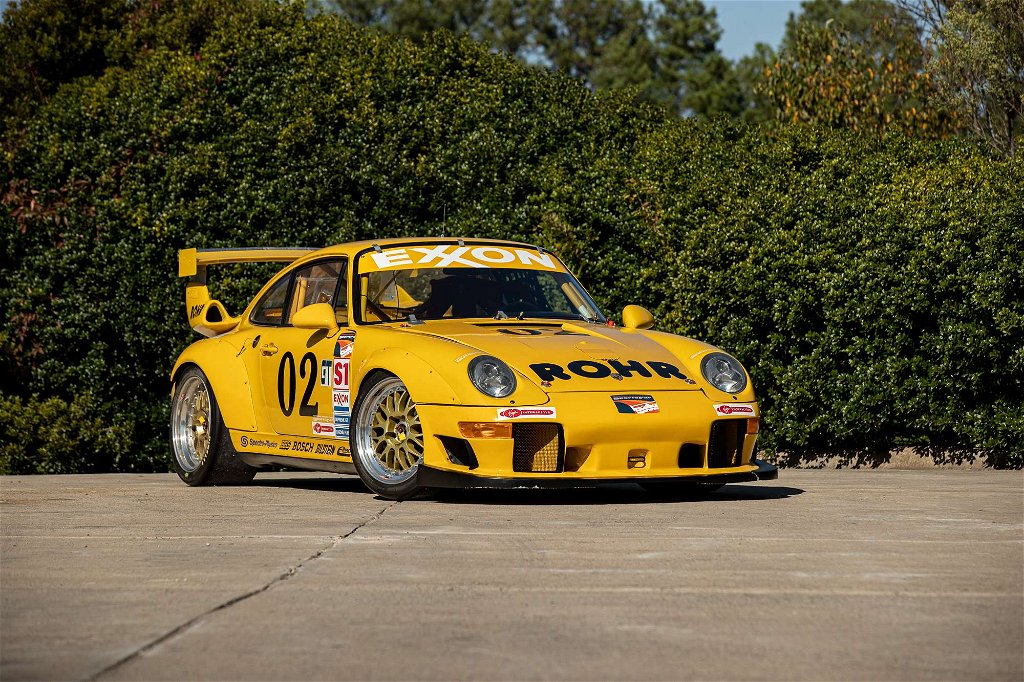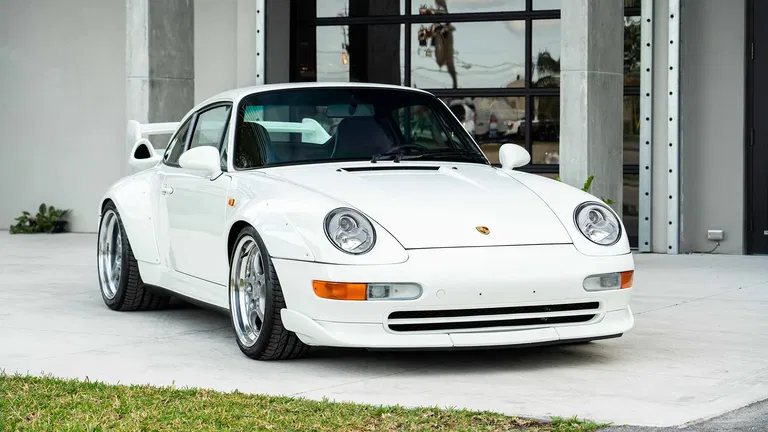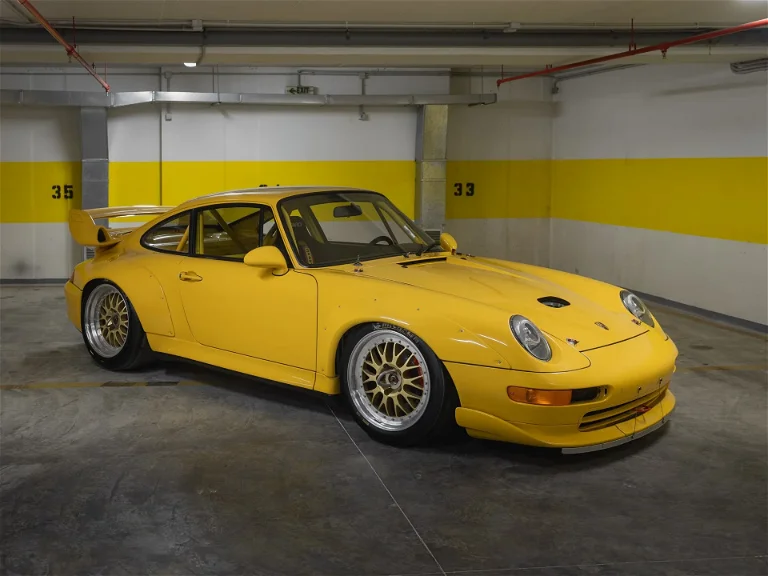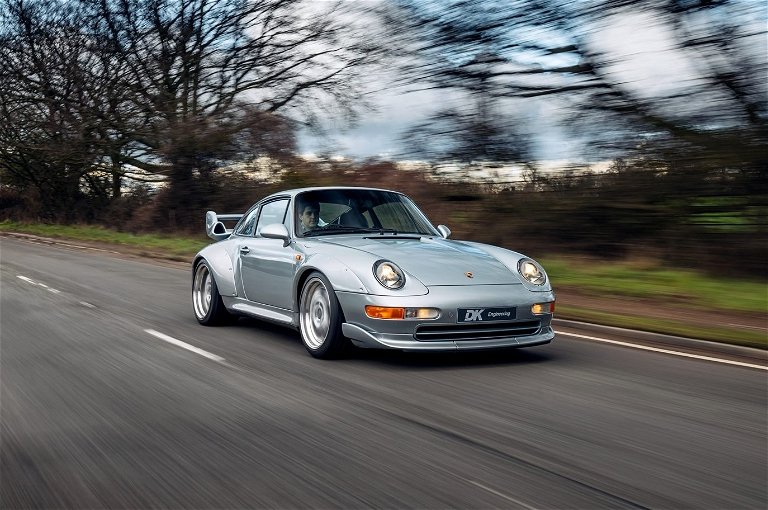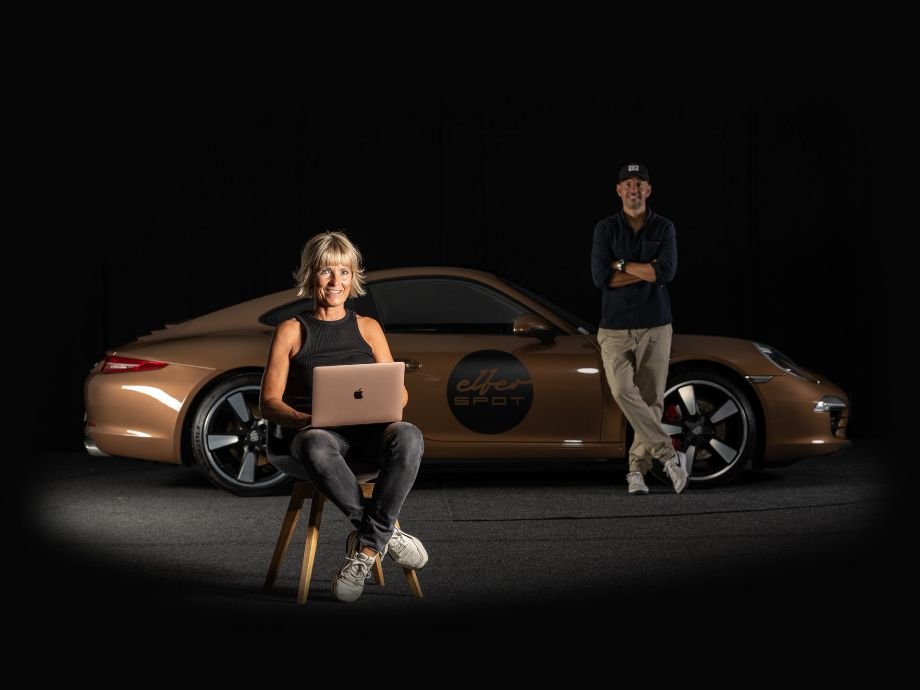Porsche began by stripping the all-wheel-drive system from the 993 Turbo and gutted the interior to include only the bare essentials necessary for racing. The body panels were extensively lightened through the use of kevlar and aluminum, the rear and side windows are fitted with lightweight glass, and a full welded-in steel Matter roll cage was installed for both safety and stiffness. The exterior received bolt-on fender flares, a large rear wing, and aerodynamic panels with larger ducts for improved brake cooling.
Porsche incorporated its usual suite of modifications to further stiffen the chassis for racing. All of the rubber bushings in the multi-link suspension were replaced with spherical bearings, a stiffer rear subframe, and larger multi-link suspension bushings were implemented for more precise wheel control, a five-position adjustable front and three-position rear sway bar was installed, and a front shock tower brace was added- greatly improving the rigidity of the chassis and connection to the road. The suspension was lowered 20mm all around and the geometry was revised to match. A rapid-fill 100-liter fuel cell was installed in the front trunk with high-flow fuel pumps and braided steel lines. 322mm ventilated and drilled rotors were paired with four-piston calipers and an ABS system with an electronic-hydraulic high-pressure servo, and lightweight 18×10 and 11-inch modular wheels with magnesium centers were installed to reduce unsprung weight.
The extreme weight-saving measures paid off, and the GT2 weighed in at some 485 pounds lighter than the production 911 Turbo. Through an adjusted Bosch Moronic M 5.2 engine management system along with the maximum boost pressure increase to 13psi, the M64/81 3.6-liter flat six was tuned to produce a reported 450 horsepower and 400 lbs/ft of torque with the mandatory restrictor plates, although Porsche had a reputation of being conservative when disclosing their power output capabilities. The six-speed gearbox with a 40/60% limited slip differential transferred that power to the rear wheels only as per the class regulations. The result was the 911 GT- also known as the GT2 for the class in which it would compete in, and a total of 25 were required for homologation. It was a figure easily met by the high demand from privateers.
The GT2 debuted at the 1994 Essen Motor Show, and this 993 GT2 was ordered by Jochen Rohr for his racing team during the 1994 Porsche Motorsport banquet in Germany. It was the first production example built by Roland Kussmaul’s Race Sports Department at Porsche. Its first outing was at the 24 Hours of Daytona in 1995 with Rohr, David Murry, Bernd Mayländer, and the legendary Hurley Haywood sharing driving duties, resulting in a 4th Overall and 2nd in Class (GTS1). It was successfully campaigned by Rohr at numerous SCCA-sanctioned World Challenge events including a 3rd place finish at Phoenix, a 4th place finish at Mosport, 6th place at Lime Rock, 3rd at Road America, 2nd at Trois-Rivières, 5th and 6th place at the Road Atlanta 1.5 hour, and 4th at Sears Point. It returned to the 24 Hours of Daytona in 1996 but had to retire due to a crash. Jochen Rohr had the car repaired and raced it once more before selling the car in 1997.Its complete race history is outlined below:
24 Hours of Daytona, February 1995, Rohr/Murry/Haywood/Mayländer (4th Overall, 2nd in Class)
12 Hours of Sebring, March 1995, Rohr/Haywood/O’Steen (DNF, GTS1)
Phoenix 1 Hour, May 1995, Rohr (3rd in SCCA WC)
Mosport 1 Hour, May 1995, Rohr (4th in SCCA WC)
Lime Rock 1 Hour, May 1995, Rohr (6th in SCCA WC)
Road America 1 Hour, July 1995, Rohr (3rd in Class)
Trois-Rivières 1 Hour, August 1995, Rohr (2nd in Class)
Road Atlanta 1.5 Hour, August 1995, Rohr (5th in Class)
Road Atlanta 1.5 Hour, August 1995, Rohr (6th in Class)
Sears Point 1 Hour, October 1995, Rohr (4th in Class)
24 Hours of Daytona, February 1996, Rohr/Schürg/Rosenblad (DNF)
Road Atlanta 2 Hours, April 1997, Brown/Ligonnet (14th Overall, 3rd in Class)
Today, the car remains largely in the condition that it was last raced in. Its third owner enlisted Porsche Motorsports North America to once again make the car track worthy. The correct type engine was rebuilt with a blank case by Porsche Motorsports North America in Carson, CA, and the original engine case was retained, a rarity for any race car which has been campaigned extensively.
The 993 Generation GT2 model is one of the most revered 911 models ever produced and represents one of the most exciting periods in Porsche’s motorsport legacy. This example is a unique opportunity to own not only the first example produced but one that has an excellent competition history and is still eligible for numerous vintage motorsports events, including the upcoming Rennsport Reunion VII at Weathertech Raceway Laguna Seca.
